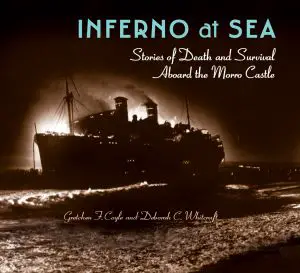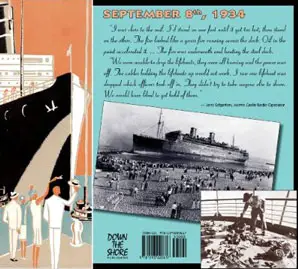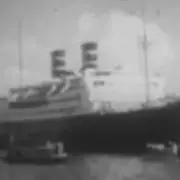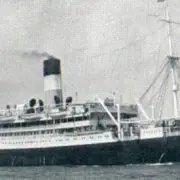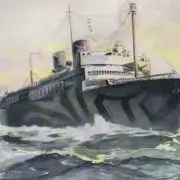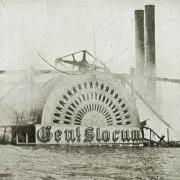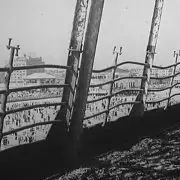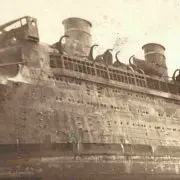Morro Castle: Inferno at Sea
Jim Kalafus reviews Inferno at Sea : Stories of Death and Survival Aboard the Morro Castle
Summer deck chair reading season is upon us, and the perfect book for a liner buff to take along for vacation reading has just been published. Coyle and Whitcraft’s Inferno at Sea is the Morro Castle book that fans have been waiting for since 1972; an intelligent and attractive compliment to Hal Burton’s The Morro Castle, which is by far the best book written about the tragedy until now.
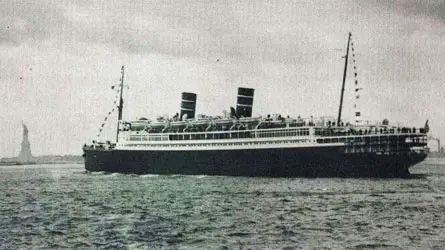
The initial, cursory glance, impression of Inferno at Sea was good indeed. The book is printed on excellent quality paper, and the photos are reproduced with from-the-negative sharpness. The scrapbook collage layout has been avoided, so one can enjoy the pictures and the text without having to break stride to turn the book, and the illustrations are all printed in sizes worthy of their content. Best of all, the majority of the pictures have not been used-to-death in other works. I’ve been researching the ship since 1972, and in depth since the 1990s, and for the most part the pictures were new and surprising to me. So, even before I began reading, I was primed to enjoy the book because I could tell that the authors had made an effort to bring new and different things to the table.
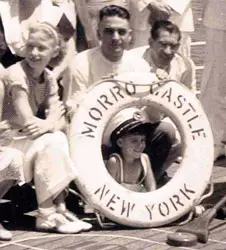
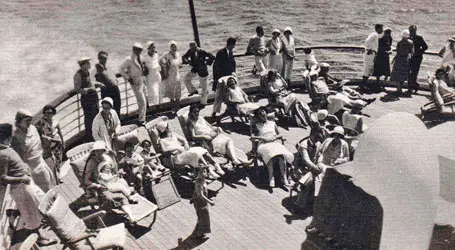
I spoke with Ms Whitcraft a few weeks before the book was published. She assured me that the text was not going to be excessively technical, and that the authors were not going to dedicate most of its running length to rehashing the conspiracy theories yet again. She and Ms Coyle wanted to focus on the neglected side of the disaster: the experiences of the passengers and crew on the morning of September 8, 1934. I was glad to hear that, and even more glad to sit down with Inferno at Sea and confirm that the authors had stuck with that format. Once one begins reading, it is hard to stop.
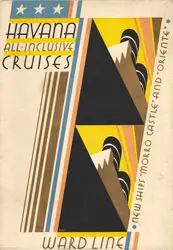
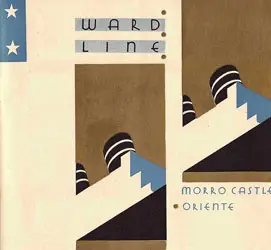
The book tells the story chronologically, with chapters devoted to the ship, the times, and the death of Captain Willmott leading in to the individual stories from the morning of the fire. These early chapters are just long enough to be thorough, present interesting details without miring down the flow, and one does not find one’s self skimming ahead to get to the good stuff. The authors spoke with survivors Marjorie Giannini and Jerry Edgerton, and with the families of a broad spectrum of survivors, victims, and rescuers. They also became the first American Morro Castle authors (I know of ) to travel to Cuba and investigate the disaster from that country’s perspective. Families have provided memorabilia and previously unpublished photographs, including one of victim Franz Hoed de Beche taken in Havana with an attractive female Morro Castle passenger, and another of the ill-fated honeymoon couple Charles and Selma Filtzer. The sad incident involving the Coast Guard vessel Tampa is discussed, as are the heroic stories of the fleet of small vessels that braved the gale and effected a large number of rescues. The tale of the Paramount, the most successful of the small rescue boats has been told several times before, but fresh material presented here keeps the chapter interesting for those who already know the story. Most of the material in Inferno at Sea was new to me, and was presented objectively. The work has a nice rhythm to it, is full of well-chosen small and large details, and I think it will be as accessible to the casual reader as it is interesting to a hardcore Morro Castle buff.
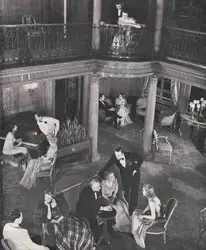
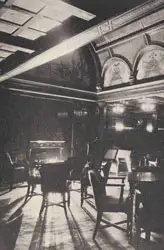

My only minor quibble, and I say that with tongue in cheek, is that I wish the work had been twice as long. The 152 page length is actually a perfect fit for the vast majority of readers. The text does not bog down or become repetitious. The type size is a perfect fit as well. I am constantly frustrated by works that use a larger than normal type to stretch a short text into a long one.
I have trouble concentrating when that trick is used. Inferno at Sea gives you value for the money, in that 152 pages of text fit neatly into 152 pages and padding is not present.
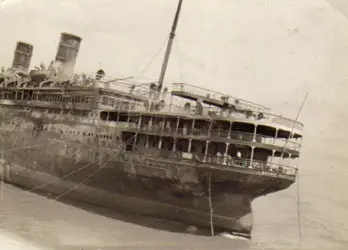
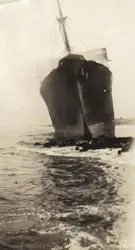
Co-author Deborah Whitcraft is the founder, endower, and principal curator of the New Jersey Maritime Museum in Beach Haven, New Jersey. The museum has a fantastic, and ever-expanding, Morro Castle room, as well as an eclectic and first rate collection of artifacts from local wrecks like the Mohawk and vessels as far-flung as the Andrea Doria and Empress of Ireland. It is definitely worth a day trip from New York or Philadelphia; every corner of the museum gives off the aura of ‘created by someone who really cares about the subject at hand.’ And so too does the book. It is not just well written, but it is also sincere and does not, for a second, project ‘sleazy grab for the disaster buck.’ The book is respectful of its subject, and is in very good taste. The Morro Castle families who participated will not feel that their trust was violated, and the reader will consider the cover price money well spent. Congratulations are extended to the authors for a job well done.
Inferno at Sea : Stories of Death and Survival Aboard the Morro Castle
Gretchen F. Coyle and Deborah C. Whitcraft
Down the Shore Publishing
Hardcover, 152 pages.

